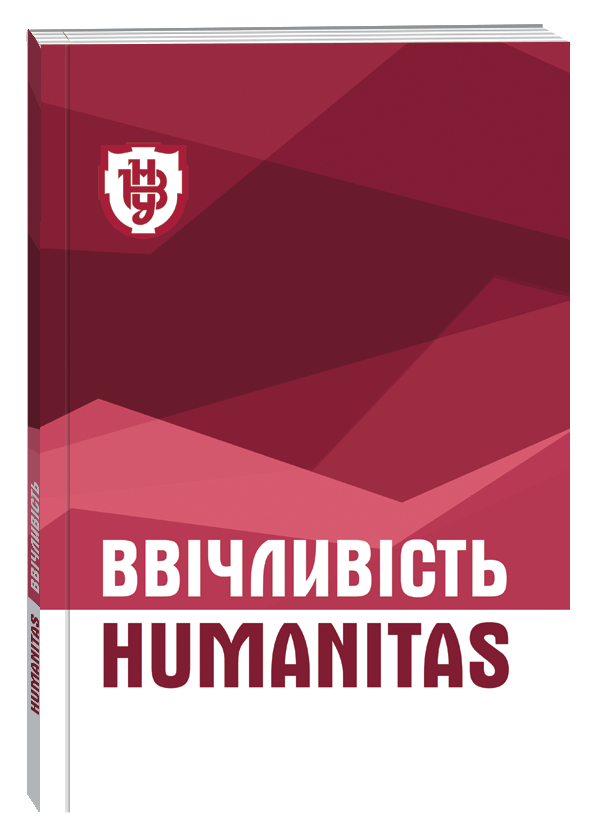ІНТЕГРАЦІЯ ДІТЕЙ З ОСОБЛИВИМИ ОСВІТНІМИ ПОТРЕБАМИ ТА ФАКТОРИ, ЯКІ РОБЛЯТЬ ЦЕЙ ПРОЦЕС УСПІШНИМ
DOI:
https://doi.org/10.32782/humanitas/2021.6.4Ключові слова:
інтеграція, діти з особливими освітніми потребами, інклюзивна освіта, просторова інтеграціяАнотація
Однією з більш широких цілей інтеграції є створення школи для всіх, яка буде відповідати особливим потребам і можливостям всіх учнів з особливими освітніми потребами і без них. Вимір терміна «інтеграція» не досягається простим співіснуванням дітей з особливими освітніми потребами і без них (просторова інтеграція). Функціональна інтеграція починається у класі і залежить від використання викладачем ефективних стратегій і практик, щоб діти з особливими освітніми потребами брали активну участь як в академічному, так і в соціальному навчанні. Основна мета цієї статті, яка стосується інтеграції дітей з особливими освітніми потребами та факторів, що роблять цей процес успішним, – це проаналізувати та дослідити інтеграційні практики, які вчителі використовують у спеціальній освіті, їх турботу про інтеграцію всіх дітей і навести фактори, які роблять цей процес успішним. З цією метою було виконано описово-аналітичне дослідження запропонованих літературних джерел та статей. Зокрема, за ключовими словами було досліджено джерела з мережі Інтернет, бібліотек. Вивчення інтеграції дітей з особливими освітніми потребами та факторів, які роблять цей процес успішним, є важливим заходом, оскільки останні десятиліття були відзначені спробою суспільства позбутися упереджень щодо людей з обмеженими можливостями. Зроблено висновок, що педагогічні інклюзивні практики, а також застосування інклюзивної освіти можуть забезпечити рівний доступ для всіх до загальноосвітньої школи та усунути шанси стигматизації учнів. У реалізації інклюзивної освіти домінуючу роль відіграє вчитель. Направляючи та допомагаючи студентам та ефективно застосовуючи педагогічні інклюзивні практики, сучасний учитель може досягти інклюзії, надаючи можливості для двостороннього спілкування. Основною умовою його практичного застосування є його безперервне навчання із питань інклюзії.
Посилання
Ainscow, M. (1997). Organization of school classes of co-education. In Tafa, E. (ed.). Co-education of children with and without learning and behavioral problems (pp. 25–54). Athens: Greek Letters.
Arbeiter, S., & Hartley, S. (2002). Teachers' and pupils' experiences of integrated education in Uganda. International Journal of Disability, Development and Education, 49(1), 61–78.
Avramidis, E., & Norwich, B. (2002). Teachers' attitudes towards integration/inclusion: a review of the literature. European journal of special needs education, 17(2), 129–147.
Ballard, K. (1995). Inclusive, paradigms, power and participation. In C. Clarck, A. Dyson & A. Millward (Eds). Towards inclusive Schools? London : David Fulton.
Coster, W. J., & Haltiwanger, J. T. (2004). Social—behavioral skills of elementary students with physical disabilities included in general education classrooms. Remedial and special education, 25(2), 95–103.
Draper, N., Aleknavicius, K., & Crooks, L. (1998). Teacher and student perspectives on a physical education inclusion programme at a college of further education. University of Canterbury. School of Sport & Physical Education.
Florian, L. (1998). An examination of the practical problems associated with the implementation of inclusive education policies. Support for learning, 13(3), 105–108.
Gibb, K., Tunbridge, D., Chua, A., & Frederickson, N. (2007). Pathways to inclusion: Moving from special school to mainstream. Educational Psychology in Practice, 23(2), 109–127.
Heflin, L.J., & Bullock, L.M. (1999). Inclusion of students with emotional/behavioral disorders: A survey of teachers in general and special education. Preventing School Failure: Alternative Education for Children and Youth, 43(3), 103–111.
Hegarty, S. (1993). Reviewing the literature on integration. European journal of special needs education, 8(3), 194–200.
Jenkins, J.R., Odom, S.L., & Speltz, M.L. (1989). Effects of social integration on preschool children with handicaps. Exceptional Children, 55(5), 420–428.
Kalambouka, A., Farrell, P., Dyson, A., & Kaplan, I. (2007). The impact of placing pupils with special educational needs in mainstream schools on the achievement of their peers. Educational research, 49(4), 365–382.
Kochhar-Bryant, C.A., West, L.L., & Taymans, J. M. (2000). Successful inclusion: Practical strategies for a shared responsibility. Prentice Hall.
Manset, G., & Semmel, M.I. (1997). Are inclusive programs for students with mild disabilities effective? A comparative review of model programs. The Journal of Special Education, 31(2), 155–180.
Mayberry, S.C., & Lazarus, B.B. (2002). Teaching students with special needs in the 21st century classroom. R&L Education.
Monsen, J.J., & Frederickson, N. (2004). Teachers' attitudes towards mainstreaming and their pupils' perceptions of their classroom learning environment. Learning Environments Research, 7(2), 129–142.
Odom, S.L. (2000). Preschool inclusion: What we know and where we go from here. Topics in early childhood special education, 20(1), 20–27.
Odom, S.L. (2002). Narrowing the question: Social integration and characteristics of children with disabilities in inclusion settings. Early Childhood Research Quarterly, 17(2), 167–170.
Padeliadu, S & Lampropoulou, V. (1997). Attitudes of special and regular education teachers towards school integration. European Journal of Special Needs Education. 12. 173–183.
Polychronopoulou, S. (2003). Children and adolescents with special needs and abilities. Modern trends in education and special support. Athens: Atrapos.
Proctor, R., & Niemeyer, J.A. (2001). Preservice teacher beliefs about inclusion: Implications for early intervention educators. Journal of Early Intervention, 24(1), 55–66.
Rose, S.R. (1998). Group work with children and adolescents: Prevention and intervention in school and community systems (Vol. 38). Sage.
Rose, R. (2001). Primary school teacher perceptions of the conditions required to include pupils with special educational needs. Educational review, 53(2), 147–156.
Sebba, J., & Ainscow, M. (1996). International developments in inclusive schooling: mapping the issues. Cambridge Journal of education, 26(1), 5–18.
Thompson, D., Whitney, I., & Smith, P. K. (1994). Bullying of children with special needs in mainstream schools. Support for Learning, 9(3), 103–106.
Vislie, L. (2003). From integration to inclusion: focusing global trends and changes in the western European societies. European journal of special needs education, 18(1), 17–35.
Vlachou, A. (2006). Role of special/support teachers in Greek primary schools: A counterproductive effect of ‘inclusion’ practices. International Journal of Inclusive Education, 10(1), 39–58.
Vlacho-Balafouti, A., & Zoniou-Sideri, A. (2000). Greek policy-practices in the area of special/inclusive education. In F. Armstrong, D. Armstrong, & L. Barton (Eds.). Inclusive education: Policy, contexts and comparative perspectives (pp. 27–41). London: David Fulton Publishers.
Zoniou-Sideri, A. (1996). The disabled and her education. A psychopedagogical accession approach. Athens: Greek letters.
Zoniou-Sideri, A. (1998). The disabled and their education. A psychopedagogical approach to integration. Athens: Greek Letters.







